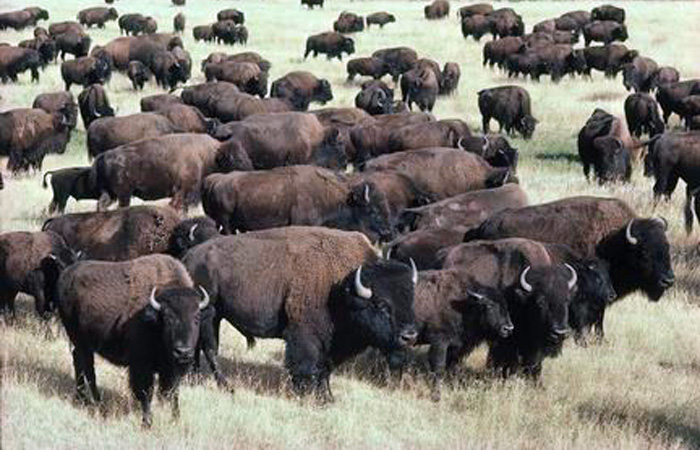Rethinking Lifestyle
Evolution and Prairie Soils

Evolution is not only an intriguing process, it is also inevitable. For plants and animals that means the fittest survive. Landscapes evolve to their climax. That is the rule of evolution. An understanding of this should affect the way we manage all aspects of our environment, and our natural environment is prairie. I was reminded of this again recently, listening to a TED talk by Allan Savory.
Allan Savory is an ecologist who is probably the leading world voice advocating Holistic Management of the grasslands of this planet. Savory grew up in, what is now, Zimbabwe where he became acquainted with desertification as it affects the semi-arid, tropical parts of the world. Where desertification had begun (as a result of over grazing), he observed that protecting such land from grazing totally did not result in the restoration of that land. On the other hand, grazing such land at high intensity, but for short periods only, did result in the recovery of the productive capacity of that land.
It is this insight that has lead him to the formation of the Savory Institute. The Savory Institute promotes Holistic Management. Loss of grasslands leads to climate change, floods, droughts, famine, and worldwide poverty. It is the mission of the Institute to promote large-scale restoration of the world’s grasslands through Holistic Management. Holistic Management is a process of decision-making and planning that gives people the insights and management tools needed to understand nature: resulting in better, more informed decisions that balance key social, environmental, and financial considerations.
We, in the West, have become extremely adept at maintaining the productivity of our grasslands using fertilizer augmentation, but this fertilizer is derived from exhaustible mineral deposits. A production system dependent on exhaustible mineral deposits is not sustainable is not Holistic.
So back to evolution: When settlers first put a plough to prairie soil, they were impressed with the fertility of this soil. This fertility was not the result of grasses and forbs growing in the absence of livestock. Rather the fertility was the result of grasses and forbs growing where they were regularly grazed and trampled by herbivores, most notably bison.
Who knows how many bison there were on the prairies prior to European settlement. Nobody counted them, but it is logical to assume that the bison population matched the carrying capacity of these soils. As long as the prairies were lush, the bison herds thrived. In dry years the grass would be less and the bison herds would diminish. Nevertheless the grazing and herding habit remained.
Therein lies the strength of the bison, and that is how it has affected the development of the prairie. High intensity, low duration grazing. When bison dominated, and the grasslands of the prairies developed, the grass was not merely grazed, it was also trampled and given a good dose of manure. The next spring when growth begins, the soil has been disturbed by sharp hoofs and the grass seed has been covered with soil and an organic mulch produced by these same hoofs.
Today practitioners of regenerative agriculture are trying to understand just how these principles can be applied in modern agriculture. They seem to be making progress. We all can be a part of this process even as we choose where we purchase our meats.




